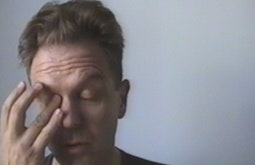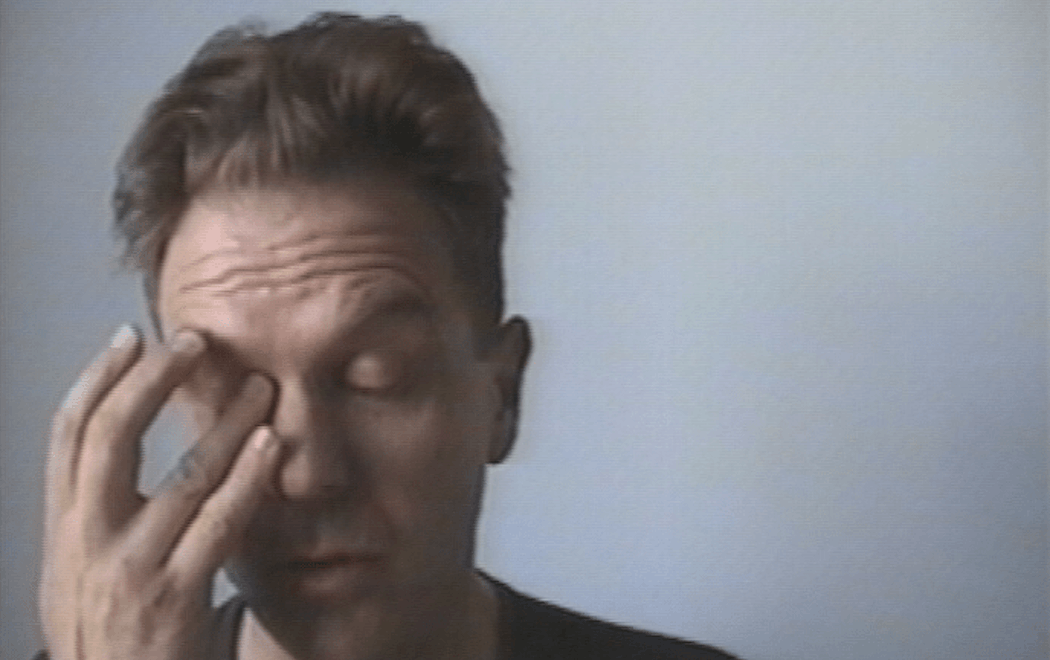In this disk (2 of 2) Dashper is interviewed on two occasions.
Interview #4
(00-57:03) is conducted in Lincoln, Nebraska on 1 November 2001. Interview by Wendy Katz, Professor of Art History at University of Nebraska, Lincoln.
Dashper describes his vision for this recording as a multiple to be seen in a public gallery. He describes his art as 'public art'—“I envisage it being freely available for whoever wants to see it.” He discusses Donald Judd's belief that no public art is truly public. He discusses Judd's project at Marfa, the traditional museum model, the general art museum model and problems with the white cube.
He talks about how he would still be a New Zealander, no matter how long he moved to the USA. Considering his impressions of the United States, he describes the sense of scale, the distance from the ocean and the volume of practicing artists. Talks about his parents support for his practice, his childhood and early interest in art.
Dashper is asked what changes he has seen in his practice since his first show 21 years ago, and replies he notes 'constant hubs' in his career. He discusses the difference between neo-minimalism and minimalism.
Interviewer: “Do you consider any of your work performance art?” Dashper replies that he is interested in the difference between activity and performance, and (this recording) is “an activity for the camera...” He also describes this recording as “... giving people the ability to understand my work, to understand my thinking, so it works... in terms of an archive.”
Interview #5
(00-57:05) is conducted in New Zealand on Good Friday 29 April 2002. Interview by Simone Horrocks.
Dashper describes his 20 year friendship with the interviewer. He gives a highly detailed description of his itinerary whilst undertaking a Fulbright Scholarship in 2001. He sums up highlights as seeing Sandra Bernhart live in New York City; watching the changing seasons; staying for 2.5 months as artist in residence at the Chenati Foundation in Marfa, Texas. Low points include his family deciding not to join him in the in the aftermath of the events of Sept 11.
Asked to give an update on 'recent projects' he says it's easier to talk about his style of art-making as a combination of working methods, systems and strategies. He recalls his first exhibition where the general response was that nothing was on show, this may be the same now. A consistent strain has been the use of photography “as sculpture or a conceptual medium as opposed to an image telling a two dimensional story.” In the past ten years he has focussed around the idea of Abstraction not as something arrived at as rejection of the figurative, but as “an umbrella subject for thinking about art …” He discusses the Marfa residency. Everything at Chenati was permanent, so he became interested in the “ephemeral nature of making things.”
Interviewer asks if the artist feels any different after the scholarship and subsequent return to New Zealand. Dashper replies “I do feel different, I feel part of a heritage which I felt was only an idea before—and this is also a result of exhibiting in Europe—I feel part of a heritage of conceptualism... the idea of minimalism, or reductive philosophies of showing and making work, the idea of working with fabricators, etc feels more real to me...” Dashper talks further about feeling “morally and conceptually comfortable” with others making his work. Has come to an understanding of his need “to work with other people” to take the role of 'impressario' and identifies this video as a continuation of this method.
The interviewer asks whether the journey has altered his feelings about home. Dashper replies that he has come to understand that home is where his family is. He didn't feel he'd left New Zealand because he retained his car, house and studio, and “never wanted to emigrate.” He describes the drive to undertake the year long residency as “largely a primal thing... the experience of the 4 seasons.” He talks about email allowing him to retain links with New Zealand.
Interviewer asks “Why did you decide to work on video?” Dashper replies “I was interested in the performative nature of doing this... I could invite four people to make this video... and to some degree it was as much about them as me, and that they might ask the same question... I'm in the role of impressario by bringing these people together that have never met and will never be seen on camera themselves... and that they are in different parts of the world, one was in New York, one was in Texas, one was in Nebraska, one was in my living room in Auckland, New Zealand...” He describes the four interviewers as “two men and two women from very different backgrounds” who have all spent considerable amounts of time living abroad, or who were born elsewhere but emigrated.
“My plan for this piece is to have it produced on a DVD and this will be projected in a gallery. I purposefully supplied this to an exhibition to give an overwhelmingly large amount of didactic material to understand my work... what I will have physically on show will be very small or very reductive. So one will not be clear which is the artwork.”
Dashper discusses email, and how so much of art history is based on correspondence between artist and artist, artist and scholar, artist and institution. He sums up two schools of thought regarding archiving; to keep everything versus the difficulty of understanding what is important. He cites a conversation with an archivist who believes that an unedited archive is of little use to people because “you have to understand the mind of the artist.”

